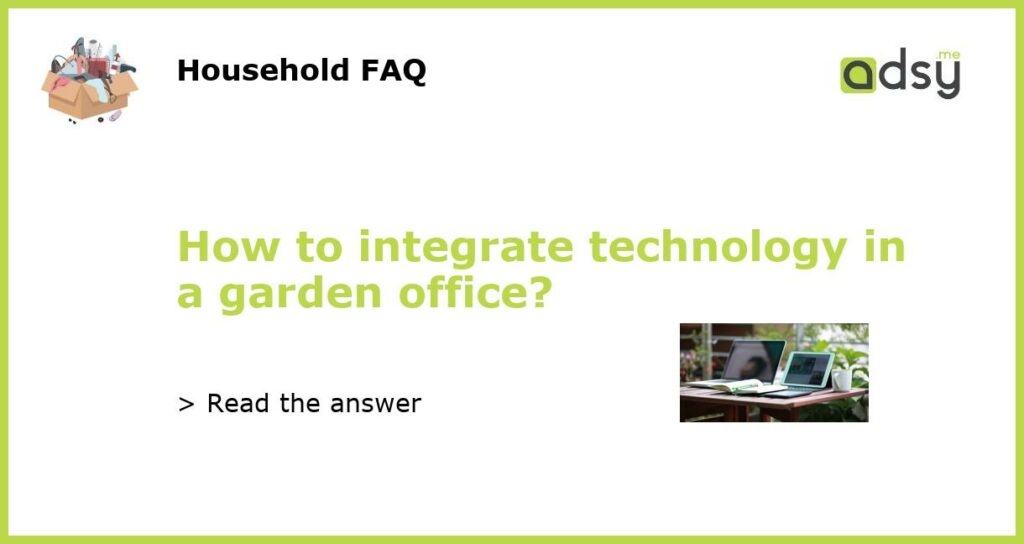Benefits of integrating technology in a garden office
Integrating technology in a garden office offers numerous benefits for both productivity and convenience. With the advancements in smart home technology, you can create a high-tech workspace that is efficient, comfortable, and environmentally friendly.
One of the main benefits of incorporating technology in a garden office is improved productivity. With the right tools and devices, you can streamline your workflow and stay organized. This includes using smart devices such as voice-controlled assistants, smart lighting systems, and programmable thermostats to create a productive work environment.
Additionally, technology integration in a garden office allows for better communication and collaboration. With the use of video conferencing tools, project management software, and cloud storage solutions, you can easily connect with clients and colleagues, share files, and stay updated on projects, regardless of your physical location.
Essential technology for a garden office
When it comes to integrating technology in a garden office, there are a few essential devices and systems to consider. These include:
1. Reliable internet connection: A stable and fast internet connection is crucial for a productive garden office. Consider investing in a high-speed internet plan to ensure smooth video conferencing, file sharing, and online collaboration.
2. Smart lighting system: A smart lighting system can help create a comfortable and productive workspace. Look for adjustable lighting with programmable settings to mimic natural light throughout the day, boosting your mood and productivity.
3. Voice-controlled assistants: Devices like Amazon Echo or Google Home can be integrated into your garden office, providing voice-controlled assistance, managing your calendar, and playing music or podcasts to keep you motivated throughout the day.
Environmental considerations
Integrating technology in a garden office doesn’t have to mean sacrificing your commitment to environmental sustainability. Here are a few considerations to keep in mind:
1. Energy-efficient devices: Opt for energy-efficient devices and appliances to reduce your carbon footprint. Look for products with the Energy Star label, which signifies that they meet the energy efficiency standards set by the U.S. Environmental Protection Agency.
2. Solar power: Consider installing solar panels on the roof of your garden office to generate clean and renewable energy. Solar power can help offset your electricity consumption, and you may even be able to sell excess energy back to the grid.
Creating a functional and ergonomic workspace
Integrating technology in a garden office should also prioritize creating a functional and ergonomic workspace. Here are a few tips:
1. Choose the right furniture: Invest in a comfortable and ergonomic desk and chair to support your posture and reduce the risk of musculoskeletal issues. Look for adjustable furniture that can be customized to your specific needs.
2. Cable management: Keep cables and cords organized to create a clutter-free workspace. Utilize cable management solutions such as cable clips or zip ties to keep everything neat and tidy.
3. Natural light and views: Position your desk near windows to maximize natural light and provide views of the garden. Natural light has been shown to improve mood and productivity, while access to nature can reduce stress levels during breaks.
Security considerations
Lastly, it’s important to consider the security of your integrated technology in a garden office:
1. Secure network: Protect your network and devices by setting up a secure Wi-Fi network with a strong password. Regularly update your router’s firmware and use robust encryption protocols such as WPA2.
2. Cybersecurity measures: Install reputable antivirus and firewall software to protect your computer and data from online threats. Regularly update your software to ensure you have the latest security patches.
3. Data backup: Implement a reliable data backup solution to safeguard your important files and documents. This can include cloud storage services or external hard drives that are regularly backed up.

